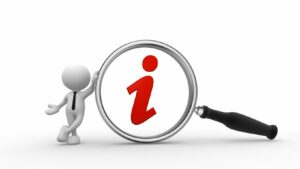In the Circular flow Model, the Market Economy Creates ______.
Hey there! Ever wondered how money and goods flow through an economy? Well, in the fascinating world of economics, we have a nifty little model called the circular flow model that helps us understand just that. In this article, I’ll walk you through the ins and outs of this model, explaining how it works and why it’s so important in understanding the functioning of an economy.
So, what exactly is the circular flow model? Essentially, it’s a simplified representation of how money, resources, and goods move between households and businesses in an economy. It shows the flow of income, spending, and production, giving us a bird’s eye view of the economic system. By understanding this model, we can gain valuable insights into how different sectors of the economy interact and how changes in one area can impact the overall economy.
Understanding the Circular Flow Model
What is the Circular Flow Model?
The circular flow model is a fundamental concept in economics that provides a simplified representation of how money, resources, and goods flow between households and businesses in an economy. It visualizes the continuous interplay of economic activities, illustrating the connections and interactions between different sectors.
At its core, the circular flow model showcases the flow of income, spending, and production. It shows how money moves from households to businesses in the form of spending on goods and services, and how businesses generate income through production. This continuous cycle fuels the economy and allows for the exchange of goods and services.
Key Elements of the Circular Flow Model
To better understand the circular flow model, it’s important to delve into its key elements:
- Households: In the circular flow model, households are the primary consumers of goods and services. They play a critical role in the economy as they supply factors of production, such as labor, land, and capital, to businesses. In return, households receive income, which they can then use to purchase goods and services.
- Businesses: Businesses, also known as firms or producers, are the other key players in the circular flow model. They transform resources and inputs into goods and services that are in demand by households. Businesses generate income through the sale of these goods and services, which can be reinvested or distributed to factors of production.
- Product Market: The product market represents the space where finished goods and services are exchanged between businesses and households. It’s where households purchase consumer goods and services from businesses, and businesses generate revenue through these transactions.
- Factor Market: The factor market is where households supply factors of production, such as labor and resources, to businesses. In exchange for these inputs, households receive income in the form of wages, rent, interest, and profits.
These elements create a circular flow of income, spending, and production that constantly circulates within an economy. By understanding this model, economists and policymakers can gain valuable insights into how different sectors of the economy interact and how changes in one area can impact the overall economic system.
Actors in the Circular Flow Model
In the circular flow model, there are several key actors that play a crucial role in the functioning of the economy. Understanding these actors is essential to grasp the dynamics of the economic system.
1. Households: These are the individuals or groups of individuals who consume goods and services and provide resources to businesses. They are the ultimate consumers in the economy and play a vital role in driving demand.
2. Businesses: These are the entities that produce goods and services to meet the needs of households. They employ resources such as labor, capital, and land to create products that are sold in the market.
3. Product Market: This is where businesses sell their goods and services to households. It is the arena where transactions take place, and prices are determined based on the interaction of supply and demand.
4. Factor Market: This is where businesses purchase the resources they need to produce goods and services. Resources such as labor, capital, and land are bought and sold in this market.
By understanding the interactions between these actors, we can gain valuable insights into how the economy functions. The circular flow model provides a simplified yet comprehensive view of the flow of income, spending, and production within an economy. It highlights the interdependence of households and businesses and shows how changes in one sector can have ripple effects throughout the entire system.


